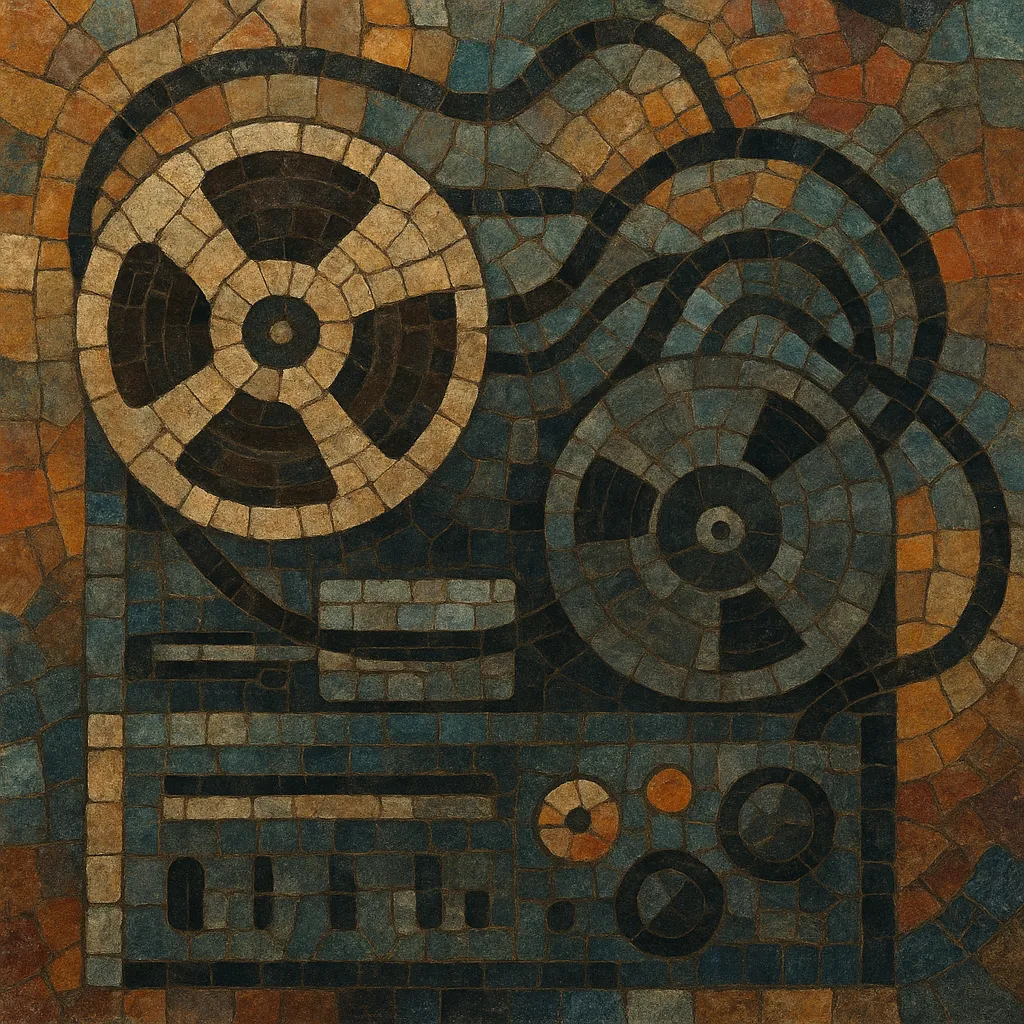Tape music is a form of early electronic and electroacoustic composition that uses recorded sounds on magnetic tape as the primary material. Composers assemble, cut, splice, loop, reverse, and vary the speed of tape to sculpt timbre, rhythm, and form, often transforming everyday noises into abstract musical structures.
Emerging from post–World War II studio experimentation, it blurred the line between composition and sound design. Works are typically fixed-media pieces intended for loudspeaker playback rather than traditional performance, privileging timbral exploration, spatial projection, and montage over conventional harmony and meter.
Tape music arose from the convergence of magnetic tape technology and avant-garde compositional thought. In Paris, Pierre Schaeffer coined the term “musique concrète,” crafting studies from train sounds and other recorded noises by cutting and splicing tape; Pierre Henry soon joined him at the RTF/GRM studios. In parallel, German studios (notably WDR in Cologne) explored Elektronische Musik, building sound from tones and noise and also committing it to tape.
Through the 1950s, dedicated studios proliferated: the RAI Studio di Fonologia in Milan (with Luciano Berio and Bruno Maderna), the Columbia-Princeton Electronic Music Center in New York (Vladimir Ussachevsky and Otto Luening), the BBC Radiophonic Workshop in London (Daphne Oram, later Delia Derbyshire), and others (e.g., Polish Radio Experimental Studio). Landmark works include Schaeffer/Henry’s “Symphonie pour un homme seul,” Cage’s “Williams Mix,” Stockhausen’s “Gesang der Jünglinge,” Varèse’s “Poème électronique,” and Xenakis’s “Concret PH.”
Composers manipulated tape via physical editing (razor-blade splicing, leader tape), varispeed and reversal, filtering and EQ, tape loops and feedback, and multitrack layering. The resulting aesthetics ranged from documentary-like sound collages to rigorously structured serial designs, and from noise- and texture-focused sound masses to proto-ambient drones.
As digital tools emerged, tape’s workflow and aesthetics seeded acousmatic music, electroacoustic composition, sound art, ambient, drone, glitch, and various experimental practices. Although many contemporary works are produced digitally, the conceptual lineage—fixed-media composition, montage, studio-as-instrument, and loudspeaker diffusion—remains central to the genre’s enduring influence.


